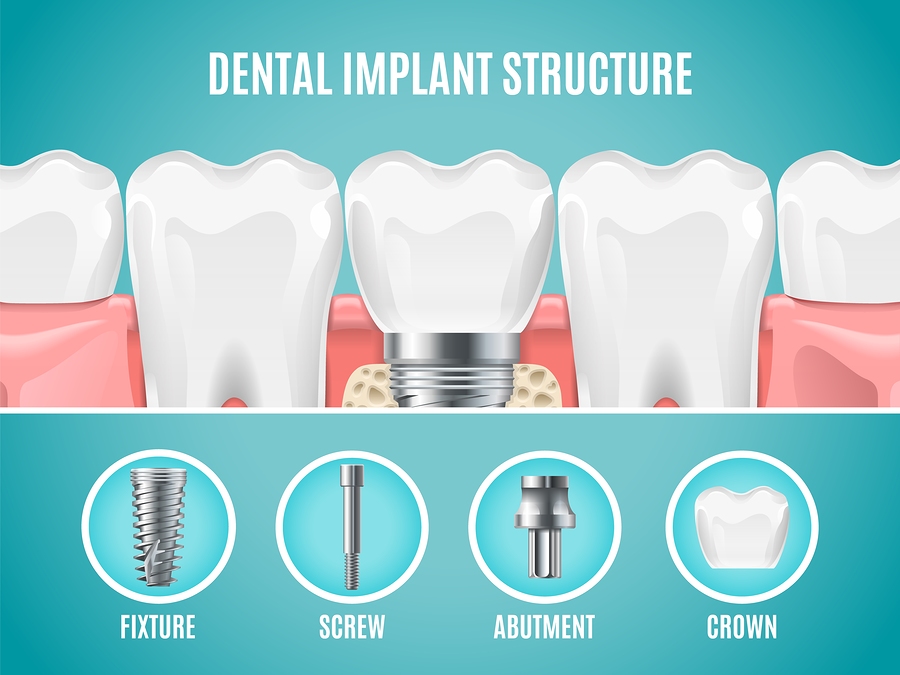The Greatest Guide To Dental Sense
Table of ContentsDental Sense - The FactsThe Definitive Guide to Dental SenseSome Known Details About Dental Sense Dental Sense for Beginners
are clinical tools operatively implanted right into the jaw to bring back a person's capability to chew or their look. They give assistance for fabricated (phony) teeth, such as crowns, bridges, or dentures. When a tooth is lost as a result of injury or disease, an individual can experience complications such as rapid bone loss, malfunctioning speech, or adjustments to eating patterns that result in discomfort.Dental dental implant systems include a dental implant body and dental implant joint and may additionally consist of an abutment addiction screw. Kids dental. The dental implant body is operatively put in the jawbone in location of the tooth's origin. The dental implant joint is usually connected to the dental implant body by the abutment addiction screw and prolongs through gum tissues into the mouth to support the affixed man-made teeth
(https://pastebin.com/u/dentalsense1)Framework of The Dental Implant System picking oral implants, talk with your oral supplier about the prospective benefits and risks, and whether you are a candidate for the procedure. Points to think about: Your total health is a crucial factor in figuring out whether you are a good prospect for oral implants, how much time it will take to recover, and the length of time the implant may stay in location.
Smoking may affect the recovery process and decrease the long-term success of the dental implant. The healing process for the dental implant body may take several months or longer, throughout which time you commonly have a short-lived abutment instead of the tooth. the oral implant procedure: Carefully adhere to the oral health directions given to you by your oral copyright.
Getting The Dental Sense To Work
Implant failure can lead to the need for one more medical procedure to take care of or change the implant system. Restores the capability to eat Recovers cosmetic look Helps keep the jawbone from reducing due to bone loss Preserves the health and wellness of the surrounding bone and periodontals Aids maintain nearby (neighboring) teeth secure Improves high quality of life Damages to bordering all-natural teeth during implant placement Injury to the surrounding tissues during surgical procedure, such as sinus perforation Injury during surgery (for instance, crack of bordering jawbone) Poor feature, such as seeming like the teeth do not bite together typically A feeling that the tooth hangs or twisting in position arising from a joint screw loosening up Implant body failing (looseness of the dental implant body) because of systemic infection, which might be more probable in clients with unrestrained diabetes mellitus as a result of neighborhood infection in bone and gums supporting the implant body because of postponed recovery, which might be a lot more most likely in individuals who smoke Problem cleaning up the gums around the implant, resulting in poor dental health Unattended gum condition Post-surgical tingling because of nerve impingement or damage Constantly alert health and wellness care carriers and imaging professionals that you have oral implants before any magnetic resonance imaging (MRI) or x-ray treatments.
FDA is not mindful of any type of unfavorable events reported for MRI or x-ray treatments with dental implants. Dental implants systems are usually made from products that follow international agreement requirements of the International Organization for Standardization (ISO) or ASTM International. These standards have details of what makes a risk-free material.

A dental implant is a framework that changes a missing tooth. With screw-like gadgets, the doctor inserts an implant into the jawbone, and it works as an anchor for a fabricated tooth, called a crown. A device called an abutment attaches the artificial tooth to the dental implant. The crown is tailor-made to fit the individual's mouth and match the color of their teeth.
Dental Sense Fundamentals Explained
Some individuals are not qualified for dental implant surgical procedure. It is for oral doctors to run on individuals with: intense illnessuncontrollable metabolic diseasebone or soft cells condition or infectionIf these problems are solved, an individual can have the surgical procedure. In, dental doctors avoid running on people with: If people with any one of the above undertake dental implant surgery, there is a greater threat of the implant failing.

Oral dental implant surgery is a customized process. Provide you time to heal. Connect the article and final crown, bridge or denture.
Next off, your surgeon will very carefully place the dental implant into your jaw. Your surgeon will certainly rearrange your gum tissues and shut the cut with stitches. If your implant is near the front of your mouth, your dental professional will make a short-term tooth for you to wear until you recover. This way, you will not have a space in your smile while you recover.
Dental Sense Things To Know Before You Buy
During the recovery phase, your jawbone must fuse to the dental implant. This process can take anywhere from 3 to nine months.
When your implant heals, your dental professional can attach the abutment (little connector article) and your last remediation (crown, bridge or denture). This generally takes regarding one hour to finish and may need a 2nd small surgical treatment. You should not feel any type of discomfort throughout your dental implant procedure due to the fact that your supplier will certainly use medicine to numb your gum tissues.